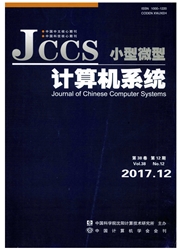

 中文摘要:
中文摘要:
内容寻址网络(Content Addressable Network:CAN)是结构化P2P的一种实现方案,它使用分布式哈希表(DHT)实现了文件信息和它的存储位置的映射.它的结构简单,节点的邻居数目固定且不随网络规模的变化而改变,具有良好的可扩展性.但是对于大规模应用,它存在着寻路时跳数过多,逻辑网络和物理网络不匹配的问题.本文首先介绍内容寻址网络的基本原理,然后提出一种层次化的CAN模型,在减少平均寻路跳数的同时使物理网络与逻辑网络更好地匹配,减少寻路时延.最后通过仿真的方法证明改进方法的有效性.
 英文摘要:
英文摘要:
The Content Addressable Network (CAN) is a method to implement the structured P2P network. CAN realizes the efficient mapping of the file information and its storage location by using Distributed Hash Table (DHT). CAN has a simple structure, and its nodes have a stable number of neighbors, which is independent on the scale of the P2P networks. Besides, CAN is resilient. However, in large scale network, there are some problems such as too many hops and the mismatch of the logical network and the physical network. In this paper, the principle of CAN is given first. And then a layered CAN modal is proposed, which can decrease the number of the hops, well match the physical network and the logical network, and reduce the delay when looking for something. The Simutation result shews the efficiency of the proposed method.
 同期刊论文项目
同期刊论文项目
 同项目期刊论文
同项目期刊论文
 期刊信息
期刊信息
